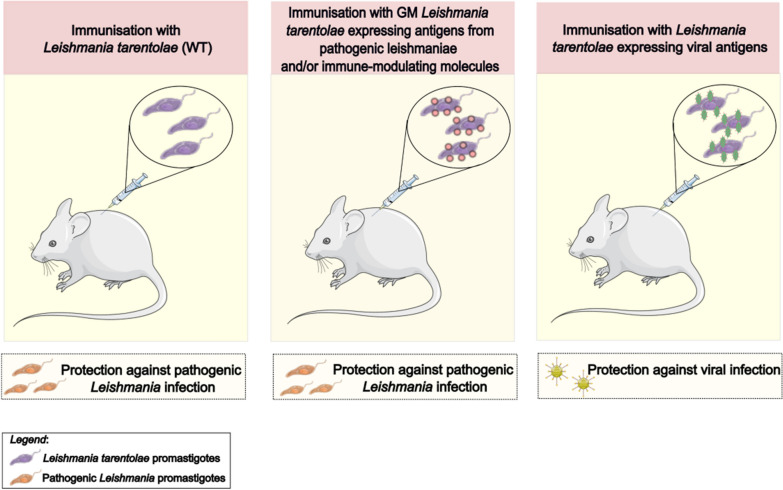- Record: found
- Abstract: found
- Article: found
Leishmania tarentolae: a vaccine platform to target dendritic cells and a surrogate pathogen for next generation vaccine research in leishmaniases and viral infections

Read this article at
Abstract
Parasites of the genus Leishmania are unusual unicellular microorganisms in that they are characterized by the capability to subvert in their favor the immune response of mammalian phagocytes, including dendritic cells. Thus, in overt leishmaniasis, dendritic cells and macrophages are converted into a niche for Leishmania spp. in which the parasite, rather than being inactivated and disassembled, survives and replicates. In addition, Leishmania parasites hitchhike onto phagocytic cells, exploiting them as a mode of transport to lymphoid tissues where other phagocytic cells are potentially amenable to parasite colonization. This propensity of Leishmania spp. to target dendritic cells has led some researchers to consider the possibility that the non-pathogenic, reptile-associated Leishmania tarentolae could be exploited as a vaccine platform and vehicle for the production of antigens from different viruses and for the delivery of the antigens to dendritic cells and lymph nodes. In addition, as L. tarentolae can also be regarded as a surrogate of pathogenic Leishmania parasites, this parasite of reptiles could possibly be developed into a vaccine against human and canine leishmaniases, exploiting its immunological cross-reactivity with other Leishmania species, or, after its engineering, for the expression of antigens from pathogenic species. In this article we review published studies on the use of L. tarentolae as a vaccine platform and vehicle, mainly in the areas of leishmaniases and viral infections. In addition, a short summary of available knowledge on the biology of L. tarentolae is presented, together with information on the use of this microorganism as a micro-factory to produce antigens suitable for the serodiagnosis of viral and parasitic infections.
Related collections
Most cited references106

- Record: found
- Abstract: found
- Article: found
Cryo-EM structure of the 2019-nCoV spike in the prefusion conformation
- Record: found
- Abstract: found
- Article: not found
Leishmaniasis

- Record: found
- Abstract: found
- Article: found
